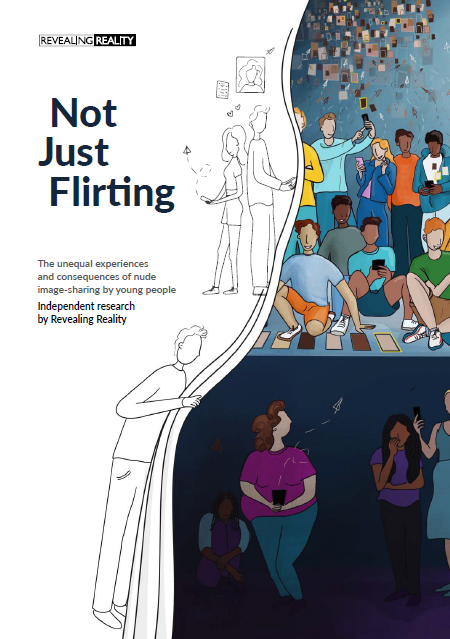Is nude image-sharing among young people just one way of flirting in the digital age? Is it merely what any generation of young people would do if they had smartphone cameras and messaging apps?
Some people certainly think so. And in individual cases it may well be doing no harm.
But if you pull back the curtain and explore the subject in depth and at scale, nude-image sharing among teenagers is not always as it can first appear.
Technology, power dynamics, confidence and disadvantage all play a part in how the experiences of image-sharing can play out.
Nude image-sharing warranted investigation
Over the last few years, while researching young people’s digital lives across numerous other projects, nude image-sharing and its consequences kept cropping up, catching our eyes, one element in the web of interconnected online behaviours that we felt warranted further and more specific investigation.
So we thought it was our responsibility to gather and share evidence of what was happening so we could raise awareness, help inform policy and improve experiences for young people.
Sensitive research in schools
It wasn’t easy – conducting research on a sensitive topic both at scale and in-depth required careful research design. We did 22 face-to-face in-depth interviews with young people and quantitative research with more than 5,100 teenagers in schools. We are hugely grateful for the support and partnership of the PSHE Association, which has worked with us on this project, to enable us to conduct our survey in schools, and to do so with both integrity and strict safeguarding.
The research Not Just Flirting, which we’re publishing today has found that, while nude image-sharing is harmless and enjoyable for some young people, for others it is miserable and stressful, and can include troubling experiences and lead to long-lasting problems, sometimes very serious.
Negative experiences happen more to some than others
What we found was that most negative experiences – feeling under pressure to share nudes, being asked for them at young ages, having images ‘leaked’, leading to distress or exploitation – are more likely to happen to some groups than others. Girls – particularly disadvantaged girls – often described the most negative experiences of all.
Fostering understanding
We believe some of this can be addressed through increased understanding and informed conversations with young people themselves, so we hope that this research will be useful to parents as well as policy-makers and those who work directly with young people.
And we’re delighted that the PSHE Association has used the findings in this research to develop tailored lesson plans to help teachers consider new ways to engage their pupils on this topic in a relatable way.
We hope that by sharing detailed evidence of what is happening, how and why it is happening and the impact that it can have, we can help people see that nude image-sharing is not, in many cases, just flirting.

